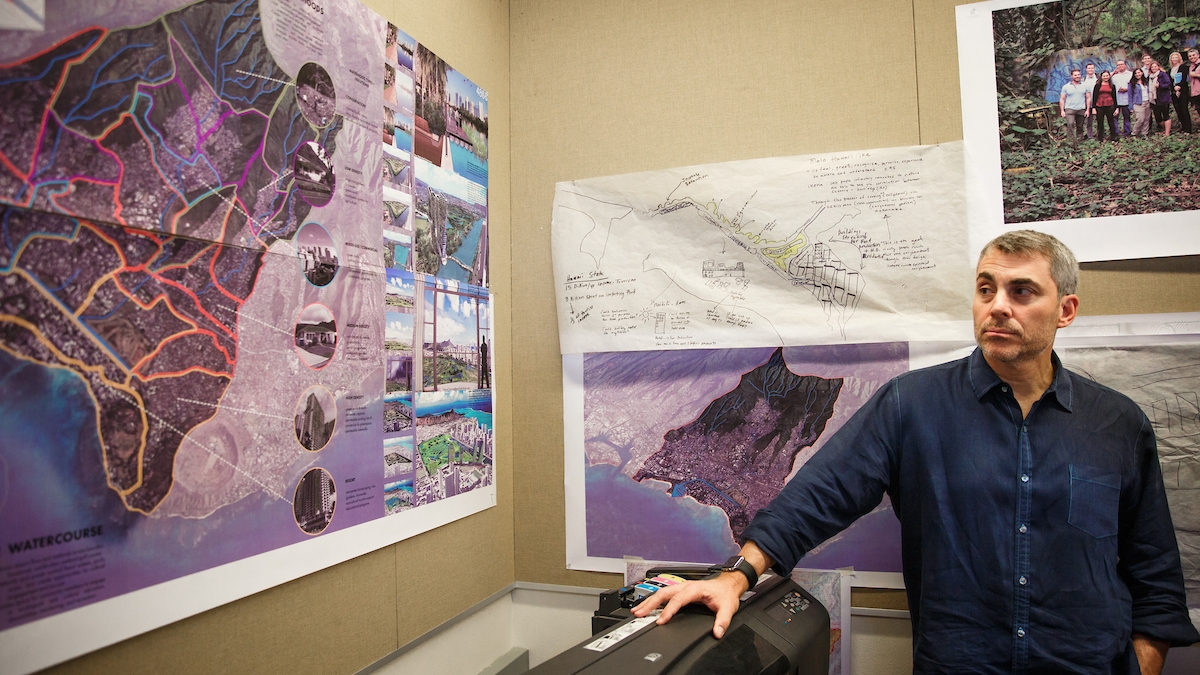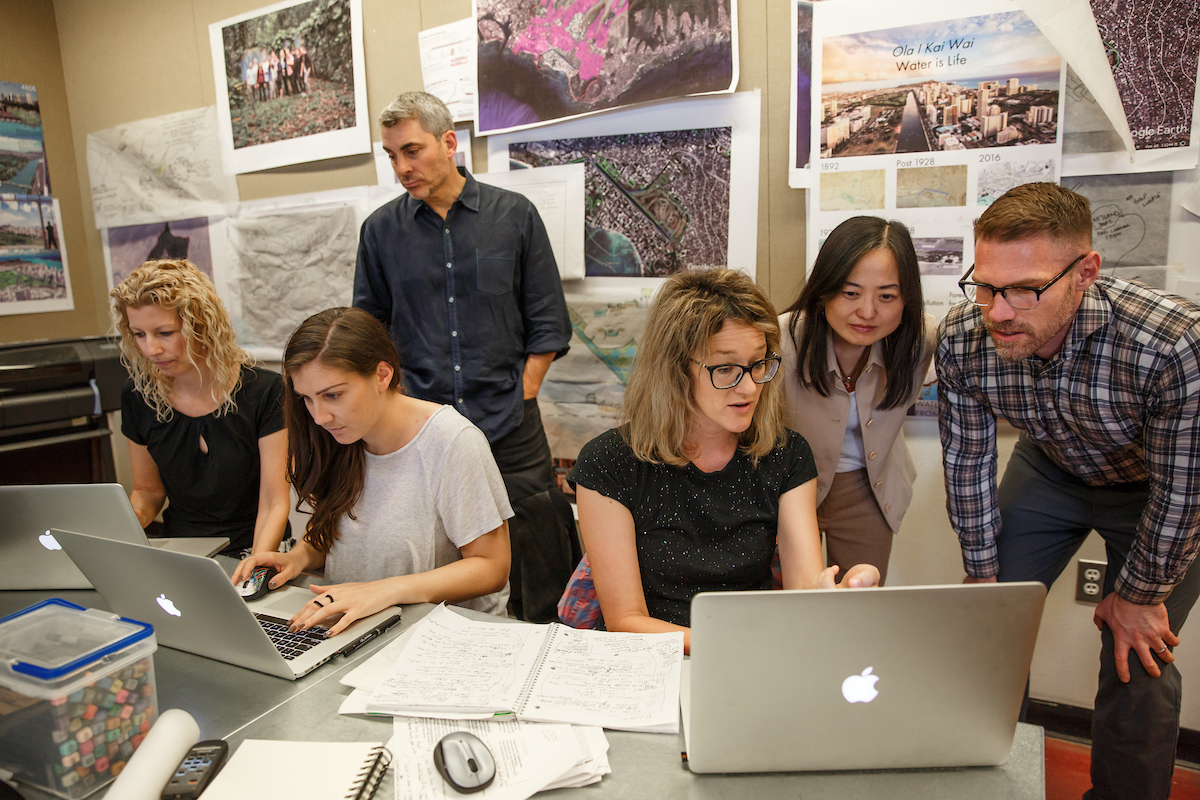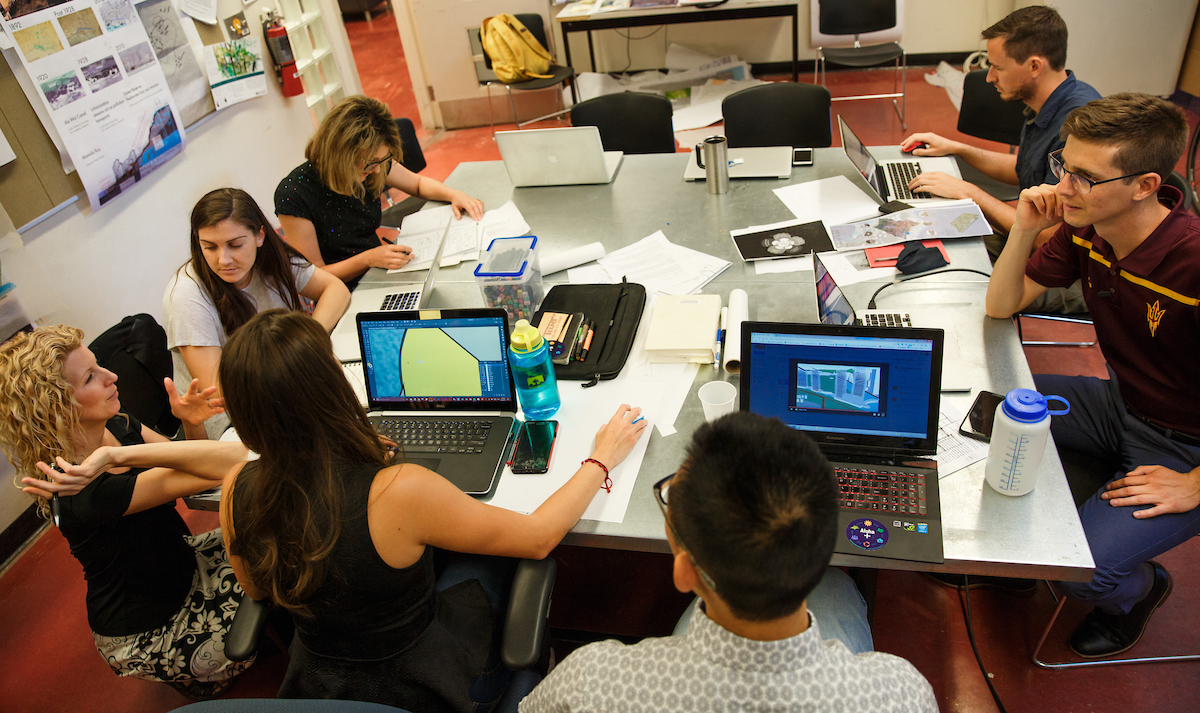Update: The team featured in this story, led by ASU Professor Darren Petrucci and Assistant Professors Chingwen Cheng and Paul Coseo, all from The Design School, took top prize in the University of Hawaii's "Make the Ala Wai Awesome" competition; in addition, the team was awarded the American Society of Landscape Architects' award for Excellence in Landscape Architecture. The winners of the international student design competition were announced June 18 at the opening ceremony of the World Youth Congress, at the University of Hawaii at Manoa.
Hawaii faces a range of sustainability threats: The state can’t grow enough food; it imports 90 percent of its energy and water; coral reefs are disappearing; the islands are being overrun by invasive species; and because of global warming, residents are increasingly vulnerable to flooding, hurricanes and tsunamis.
It might seem like an unlikely pairing, but students from the desert have been enlisted to help.
“Phoenix is ostensibly an island, and the way resource allocation occurs is not much different than Hawaii,” said Darren Petrucci, a professor in Arizona State University’s Design SchoolThe Design School is an academic unit within the Herberger Institute for Design and the Arts and offers programs in architecture, environmental design, industrial design, interior design, landscape architecture, urban design and visual communication design.. If the Hawaiian Islands can become a sustainable, then “all of the other islands in the world can do it.”
In an example of interdisciplinary problem solving, ASU students and faculty from the Herberger Institute for Design and the Arts, the School of Sustainability, and ASU’s LightWorks energy center worked recently with a Hawaii public-private partnership network to find new answers.
The ASU teams developed a four-tiered strategy, focusing on flood mitigation, community education, economic health and overall resilience. They incorporated plans from wetland filtration on a municipal golf course to creating a boardwalk for flood control.
“The big idea of this project is to empower local neighborhoods to find their own solutions,” said Paul Coseo, an assistant professor in landscape architecture in The Design School.
The three professors working with the Hawaii sustainability project give advice to students in the graduate design studios. Photo by Anya Magnuson/ASU Now
The project is the sort of thing that ASU has become known for. ASU has positioned itself as a pioneer of interdisciplinary learning and a leading center for entrepreneurship and innovation. The university was the first in the nation to offer a degree in sustainability and has been involved in partnerships including solar power and waste reduction. Also, the Herberger Institute pushes students to revitalize communities and transform neighborhoods.
“Designers don’t engage in problem solving the way an engineer might look at things because we always start with the human condition and how it engages with nature,” Petrucci said.
To that end, many of ASU-led proposals focus on neighborhoods and residents. Homeowners would learn to remove asphalt, build rain gardens and install green roofs to reduce storm water runoff, said Kristin Antkoviak, a former microbiologist studying landscape architecture.
“If everyone did just a small intervention,” she said, “it could make a great impact.”
Many strategies could be planned within a year and completed shortly thereafter, depending on funding, Coseo said.
ASU’s involvement began when President Michael Crow met with Hawai’i Green Growth leader Celeste Conners. They, along with faculty and staff from LightWorks and the School of Sustainability, discussed a statewide initiative to achieve environmental, social and economic prosperity for future generations.
LightWorks enlisted help from The Design School, which turned it into a class project for graduate students in design and sustainabilty, to address climate change, water, food, energy and natural resources sustainability on the Ala Wai Watershed, an 11-square-mile boundary on the Hawaiian island of O'ahu.
Images from the ASU Landscape Architecture social media accounts (@asulandarch) documenting their exploratory trip in Hawaii in spring 2017.
ASU teams visited Hawaii in the fall of last year and the spring of this year to listen to stakeholders and create strategies.
They found a familiar story of indigenous people living sustainably and industrial development throwing the ecosystem off-kilter.
“We have a global economic system that’s based on a growth model, which is completely incompatible with sustainability,” said Leah Gibbons, a second-year doctoral student in the School of Sustainability.
People, in general, have become “disconnected from nature,” creating a “downward spiral," she said.
At this point, even a simple thing such as a rainfall can have negative consequences, said Chingwen Cheng, an assistant professor of landscape architecture at The Design School.
“Storm water runoff from the ridge flows downward and flushes silt, oil from cars and other pollutants into Waikiki Bay and contaminates the ocean, killing the reef,” Cheng said.
O'ahu's mountaintops receive about 150 inches of rainfall annually, and a particularly heavy storm could flood about 40 percent of the areas around the Ala Wai canal if something isn't done, according to the Army Corps of Engineers.
ASU’s teams hope their plan — which has been incorporated into a 36-page e-book and 10-minute video — will be implemented by Hawai’i Green Growth to make a difference.
“I feel fantastic knowing something we’ve developed as a class can make the world a better place," said Nicholas Knoebel, a candidate for Master of Landscape Architecture. "More habitable with fewer problems."
Seven of the graduate and doctoral students working on the sustainability project gather at their table in the graduate design labs on April 26. Photo by Anya Magnuson/ASU Now
Top photo: Darren Petrucci, a professor in ASU's Design School, looks at the display board of the project area on the Hawaiian island of O'ahu. Petrucci is also the coordinator for the Master of Urban Design (MUD) program and works with the landscape architecture studio. Photo by Anya Magnuson/ASU Now
More Environment and sustainability

ASU prof turns trash into treasure
The Research Corporation for Science Advancement, or RCSA, regularly hosts a series of discussions known as Scialog, a portmanteau of science and dialogue. Created in 2010, the Scialog format…

Best outdoor experiences are shared and build connections, recreation professor says
Steve Sassaman doesn’t really need to tell you he’s an outdoorsman. One look at his full, dark beard gives a vibe that clearly says he knows which end of the kayak to put into the water first.While…

ASU offers new project-based courses for global leaders of tomorrow
Addressing complex challenges requires innovative solutions.This is why the College of Global Futures — with its four academic units including the School for the Future of Innovation in Society, the…



